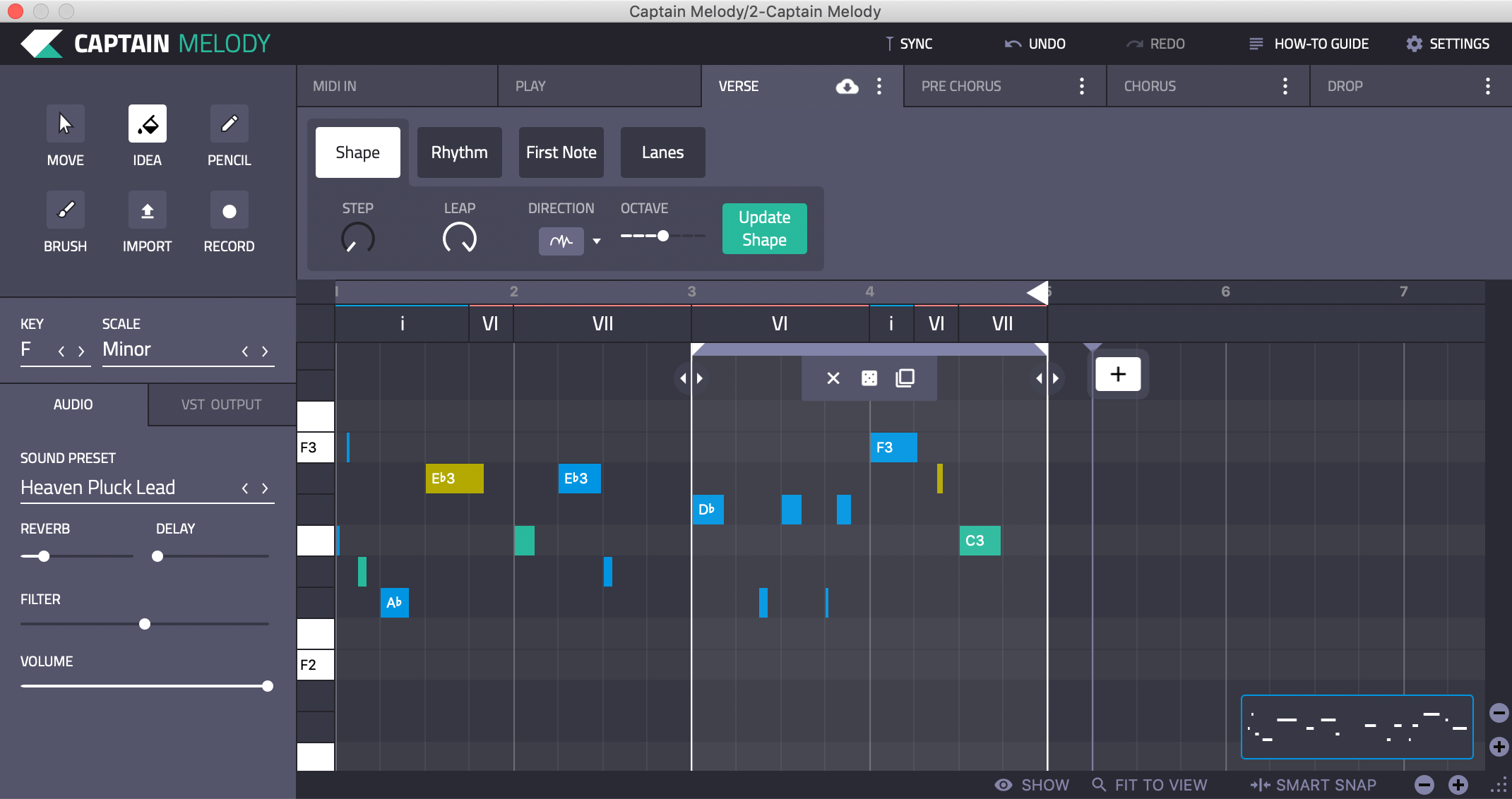Embracing repetition in melody – how it can enhance your music.
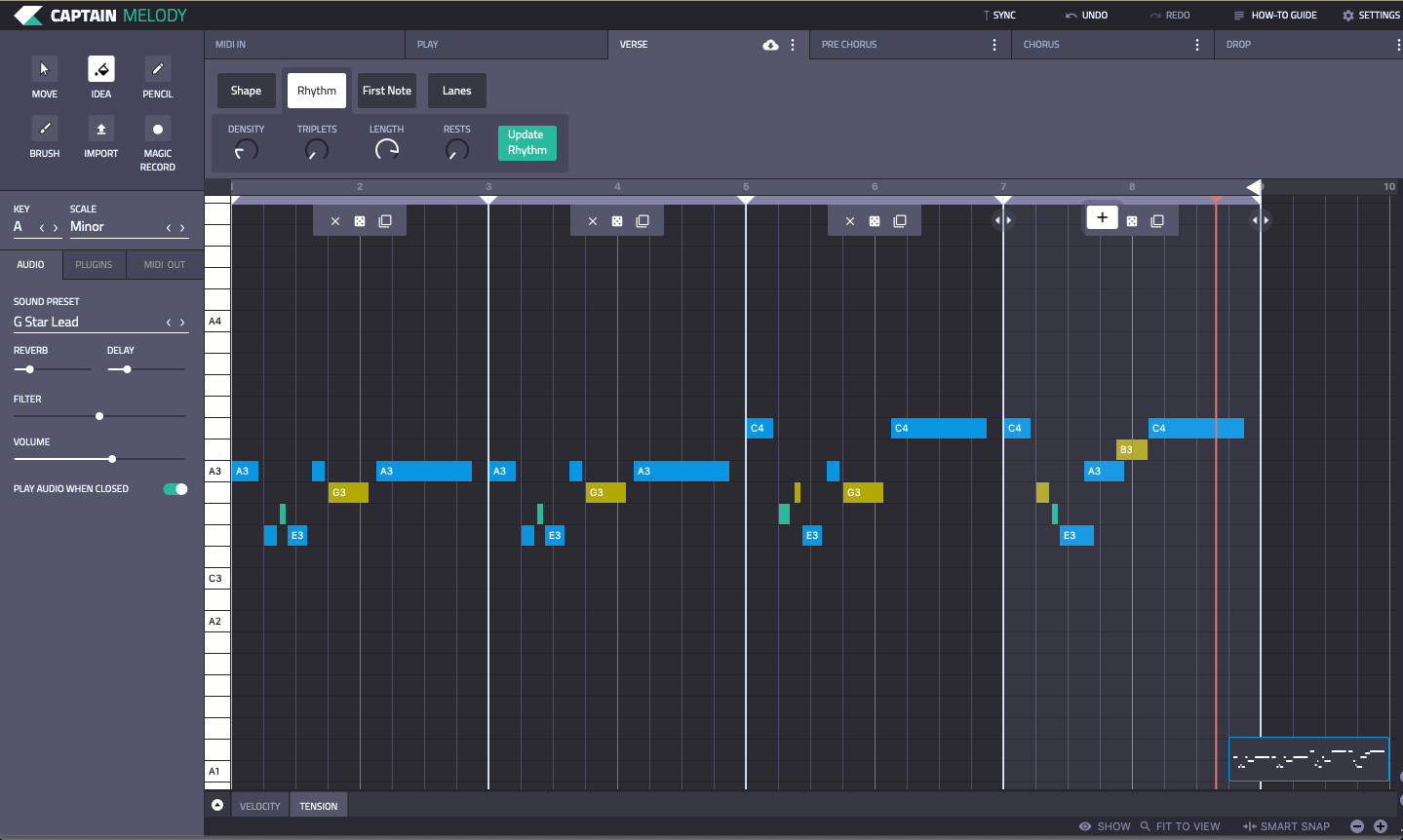
We’ve all heard it said: less is more. And with music, it’s surprising how often that’s true. Great songs generally rely on the perfect arrangement of limited materials. Here are some fantastic ways Captain Plugins can help you embrace repetition in melody to improve your songwriting.
Daniel Hignell-Tully explores the world of repetition in popular music.
Captain Melody 5.0
- Write melodies that suit your chord progression
- Connect the Melody plugin with Chords plugin
- Apply different rhythms
- Apply arpeggiators that move your MIDI notes
- Adjust the tension between the Chords and Melody
- Hear the melody played with 100+ different sounds
Making the most of minimal melodic means.
Despite high-production values and ambitious aims, pop songs often revolve around only one or two melodies. Their power comes from how they locate such simplicity across multiple instruments. Some of the best ‘ear-worms’ get stuck in our head precisely because they are so repetitive – but what stops them becoming boring? A memorable hook treads a fine line between repeating its core motif, and offering just enough difference to keep the listener engaged. This is process of embracing repetition is known as theme and variation.
Exploring harmonic development to reveal hidden structures.
In the Queen/David Bowie song ‘Under Pressure’ – theme and variation is used to enforce a simple two-note motif.
After opening with a bass part on the root and fifth of the D major scale, the wider instrumentation is added piece by piece. First comes percussion, then piano, guitar and finally the vocals. The song cleverly employs different structural forms for each of the elements. Whilst the vocals follow an unusual A-B-B-A-C structure (or intro, verse, verse, intro, chorus), the bass instead follows a more traditional A-B-C model (intro-verse-chorus), with its transition from intro to verse happening half-way through the vocals’ longer verse section. When, after some 44 seconds, the bass finally changes, it descends the D major scale from the fourth to the root, whilst maintaining the same rhythmic pattern. Meanwhile, the guitar plays a fairly traditional I-V-IV-V chord progression of D-A-G-A.
Fig. A
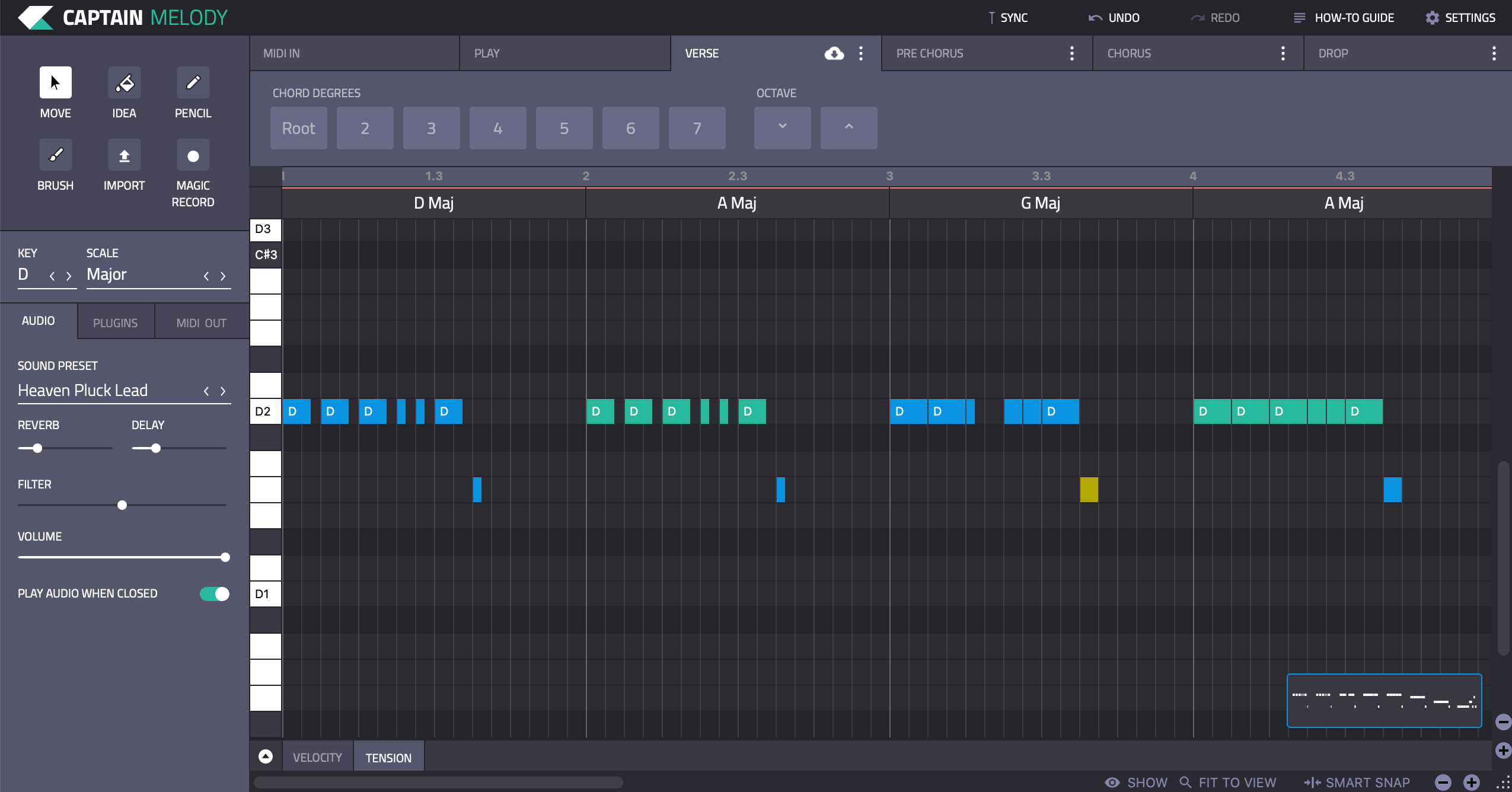
Fig. B
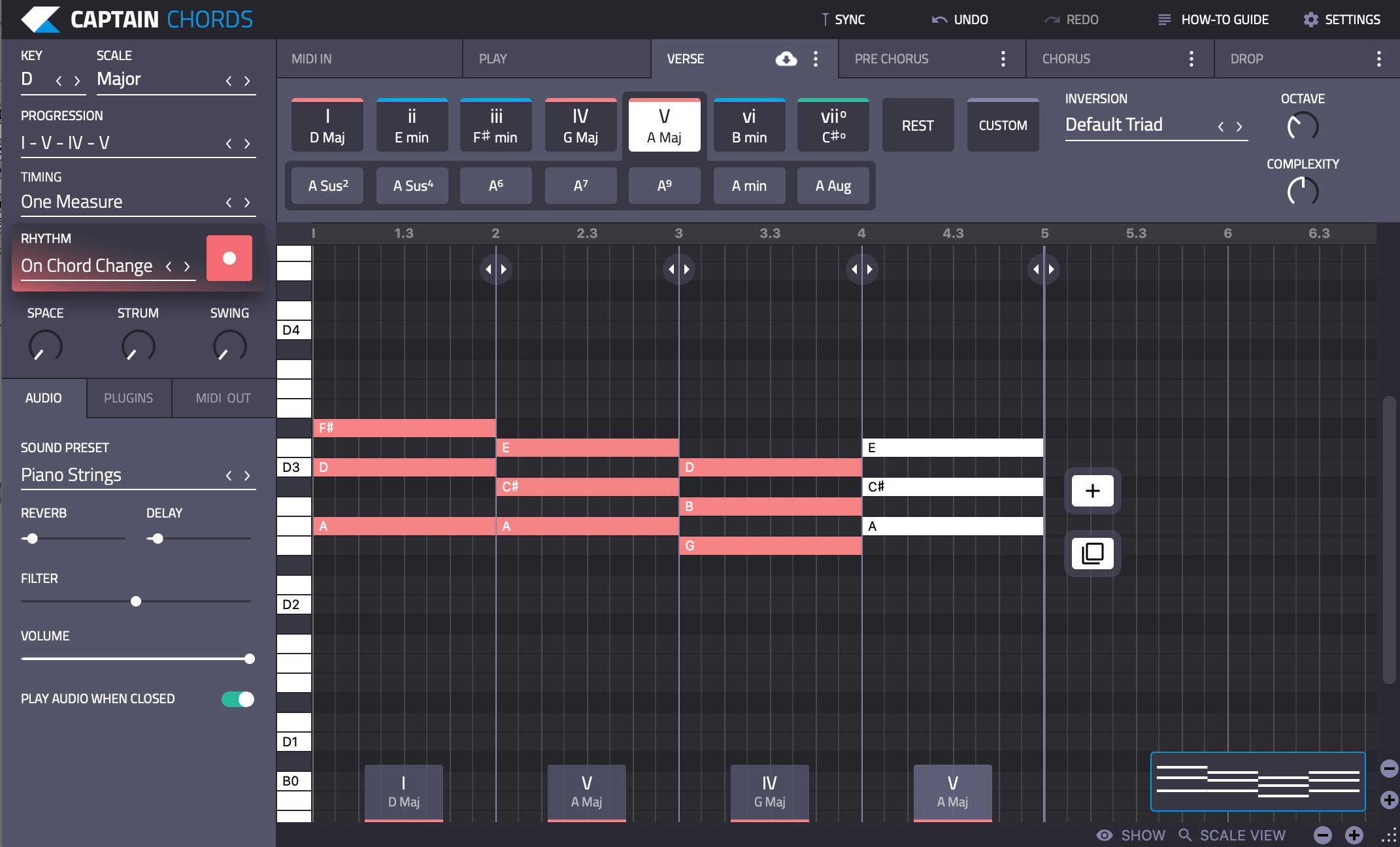
As a result, the D/A bass line, repetitive as it is, moves from sometimes reinforcing the root note of the chord (such as with the D major chord), to sometimes conflicting with it entirely. On occasion, it even plays under the A major chord, which doesn’t contain a D at all. In this manner, the listener hears two things. An ultra-repetitive hook that defines the whole track, and several hidden changes to the structure and perceived root note that serves to maintain their interest throughout.
Drawing out the rhythm.
Fig. C

A similar process occurs in Kylie Minogues ‘Can’t Get You Out of my Head’. It’s based around a pounding, monotonous bassline that seems to owe more to Kraftwerk than more obvious pop peers. The song relies on a structural juxtaposition that overlays repeating phrases at different moments throughout the track. With the simple off-beat bass (fig. C) repeating for almost the entirety of the song, the vocals alternate between three different chorus sections, either articulating or contradicting the pronounced rhythm of the bass as they proceed.
Fig. D – The ‘Can’t Get You Out of My Head’ vocal progression.
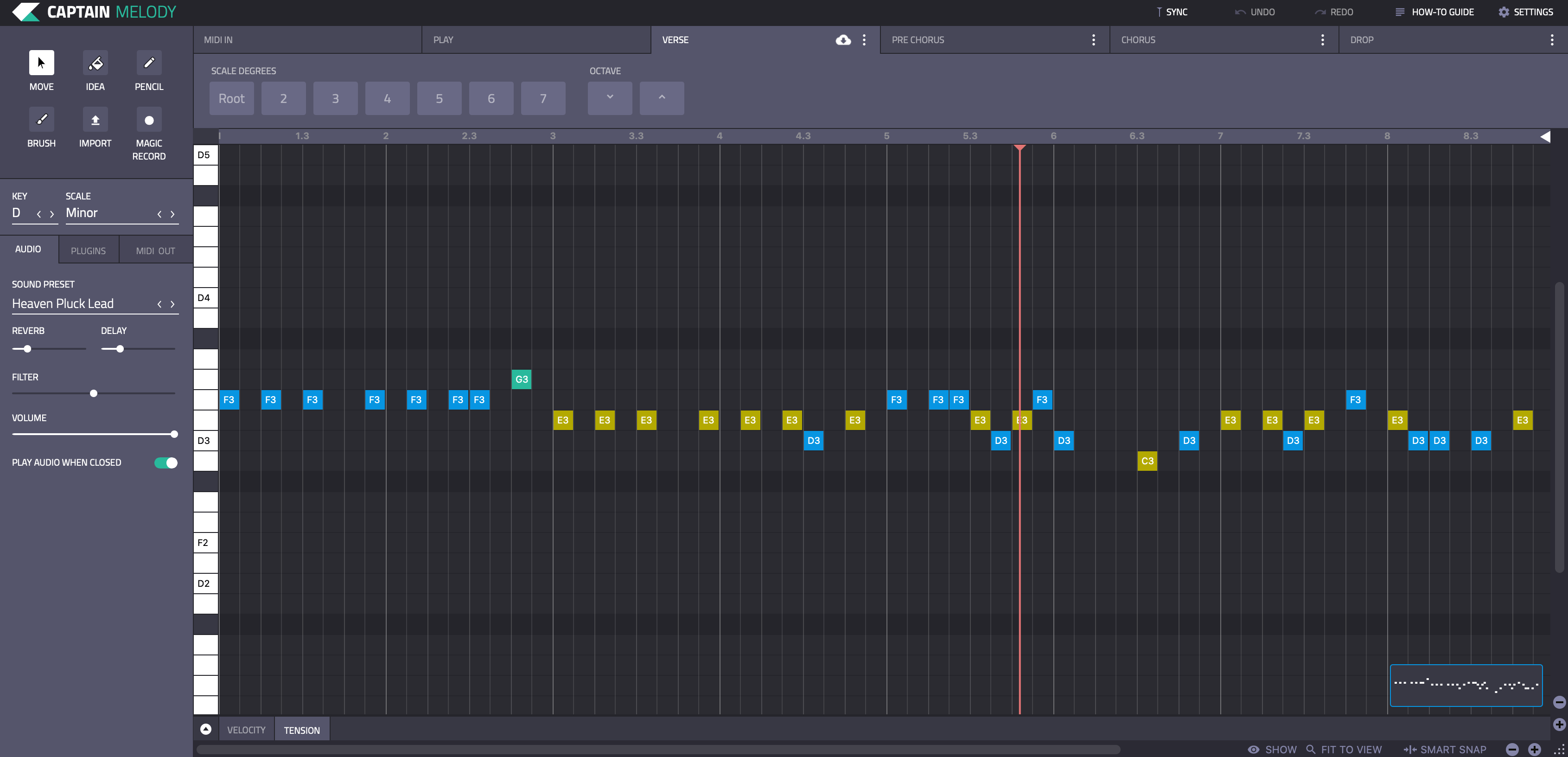
Let’s break that down some more.
The first – Kylie’s infamous ‘La La La’s’ – mimic the bass rhythm on the on-beat, articulating the 1st, second and third notes respectively. Cleverly, as the vocal moves from bar to bar, Kylie switches from emphasising the on beat to emphasising the off-beat. Whilst the music stays broadly similar, the second vocal part introduces the main lyrics. Short, staccato words emphasis the same downbeats, whilst longer, multi-syllable words articulate the upbeat (Fig. D).
Fig. E – The ‘Can’t Get You Out of My Head’ lead melody – note the 3 note ‘walk’ at the start of the bar.
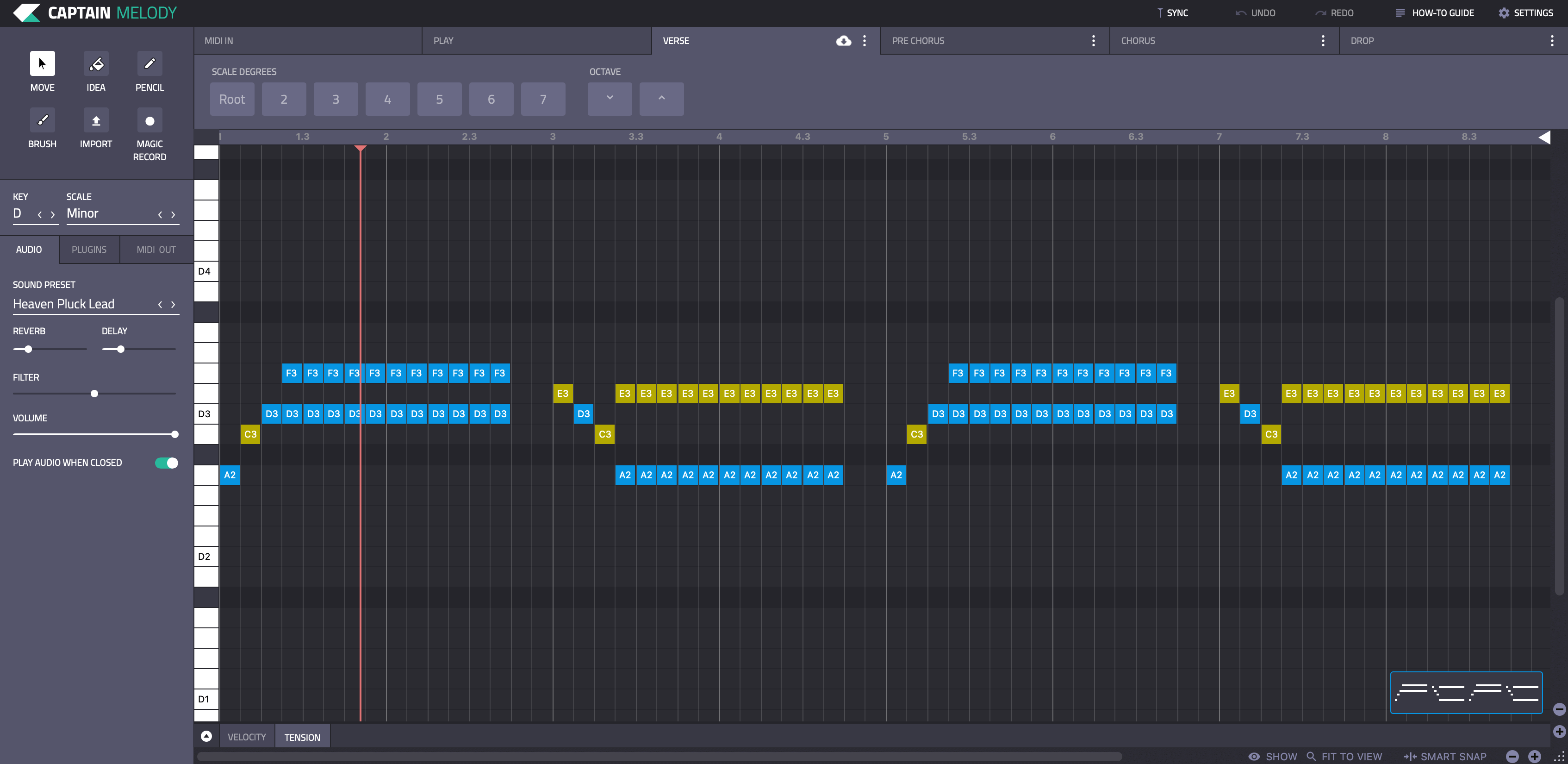
As the song proceeds, a two-bar lead line enters that obfuscates the rhythm further. Although played overall but the last two beats of the second bar, its first three notes ‘walk’ up the scale before settling on the songs root note on the fourth beat (Fig. E). By doing so, the song now gives the impression that the bar starts later than it does. In this fashion, the simplicity of the bassline serves as a stepping stone from which the other instruments can pull out a broad range of rhythmic possibilities. As each newly introduced instrument – a squelchy acid bass, multiple vocal harmonies and more traditional synth string arrangement – appear at different moments in comparison to the main 3 vocal hooks, the overriding effect is that of a song that both constantly evolves, and always remains the same. It’s a classic example os embracing repetition and playing with its potential.
Write chords faster with Captain Chords
- Write your own chord progressions
- Apply rhythms to your chords
- Set your Key and Scale for the entire song
- Explore different chords and discover your favorite combinations
- Compose music and write your own songs
- One touch plays 3 notes of the chords
Embracing repetition: building your track from scratch.
To explore these ideas in our own composition, we’ll start by loading up Captain Melody and choosing a key from the menu on the left – in the instance, Eb. As with our example tracks, we’ll play in a simple 2 bar bass-line, with no more than a couple of notes per bar, and a catchy rhythm. To spice things up, we can duplicate the first two bars and use Captain Melody to generate a few new ideas based upon our original riff. Having selected the copied bars, we can click the ideas tools. Under the ‘shape’ tab, adjust the ‘step’ and ‘leap’ parameters, choosing low values so as to retain the fundamental form of our original melody, whilst adding some subtle variation (Fig. F).
Fig. F – Using the shape parameters to make subtle changes to our original bass melody.
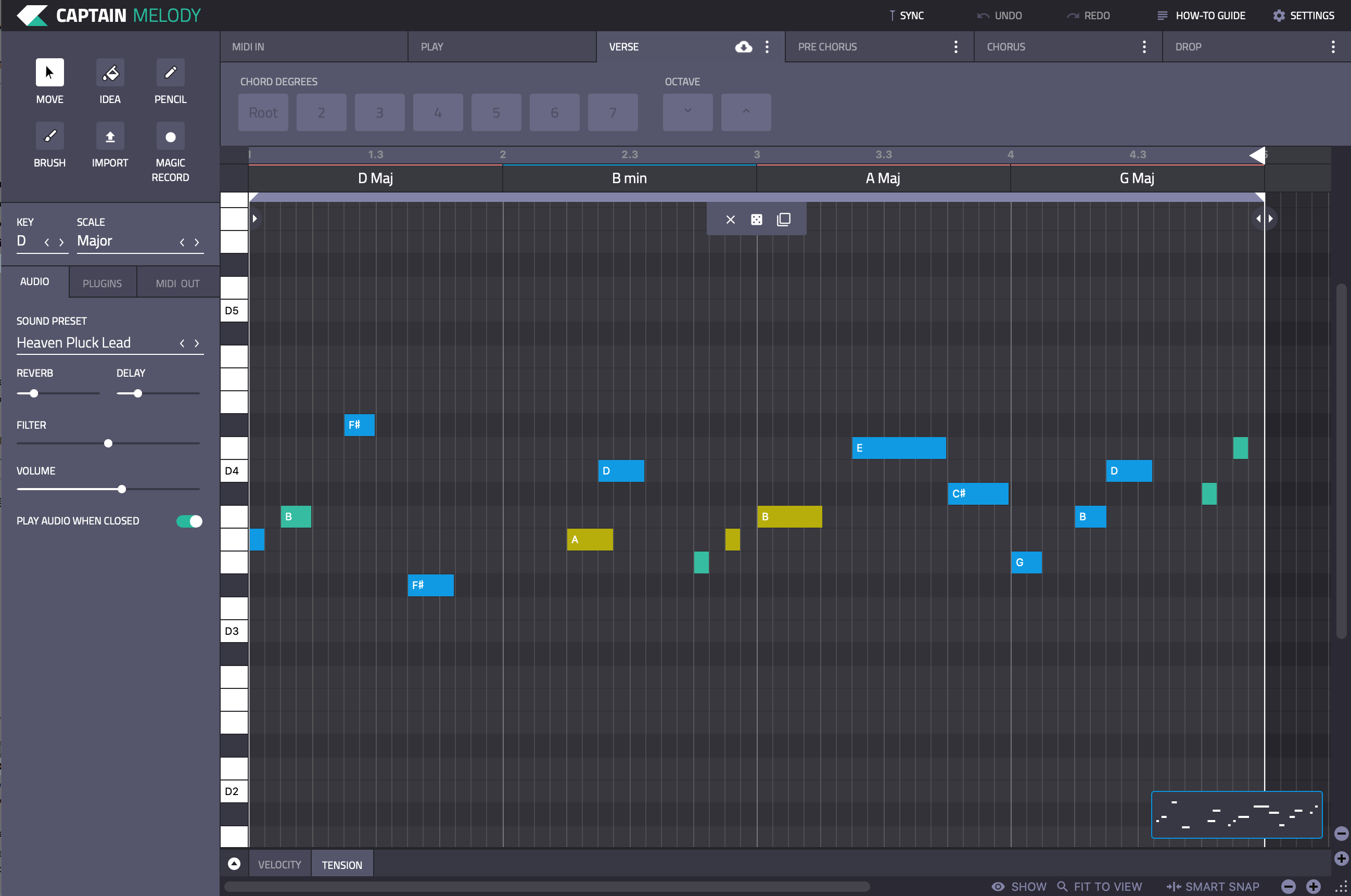
Next, we’ll use Captain Chords to add in some chords. Setting the same Eb minor key, we’ll dial in a classic I-iV-V progression (Fig. G). By comparing this to our melody, we can see that each chord contains the same notes used in our main riff, except for a brief Cb on the last beat of the first bar. Likewise, the bassline is playing the root (lowest) note of each chord, with the exception of bar 3, where it instead plays the highest.
Fig. G – A simple I-iV-V chord progression.
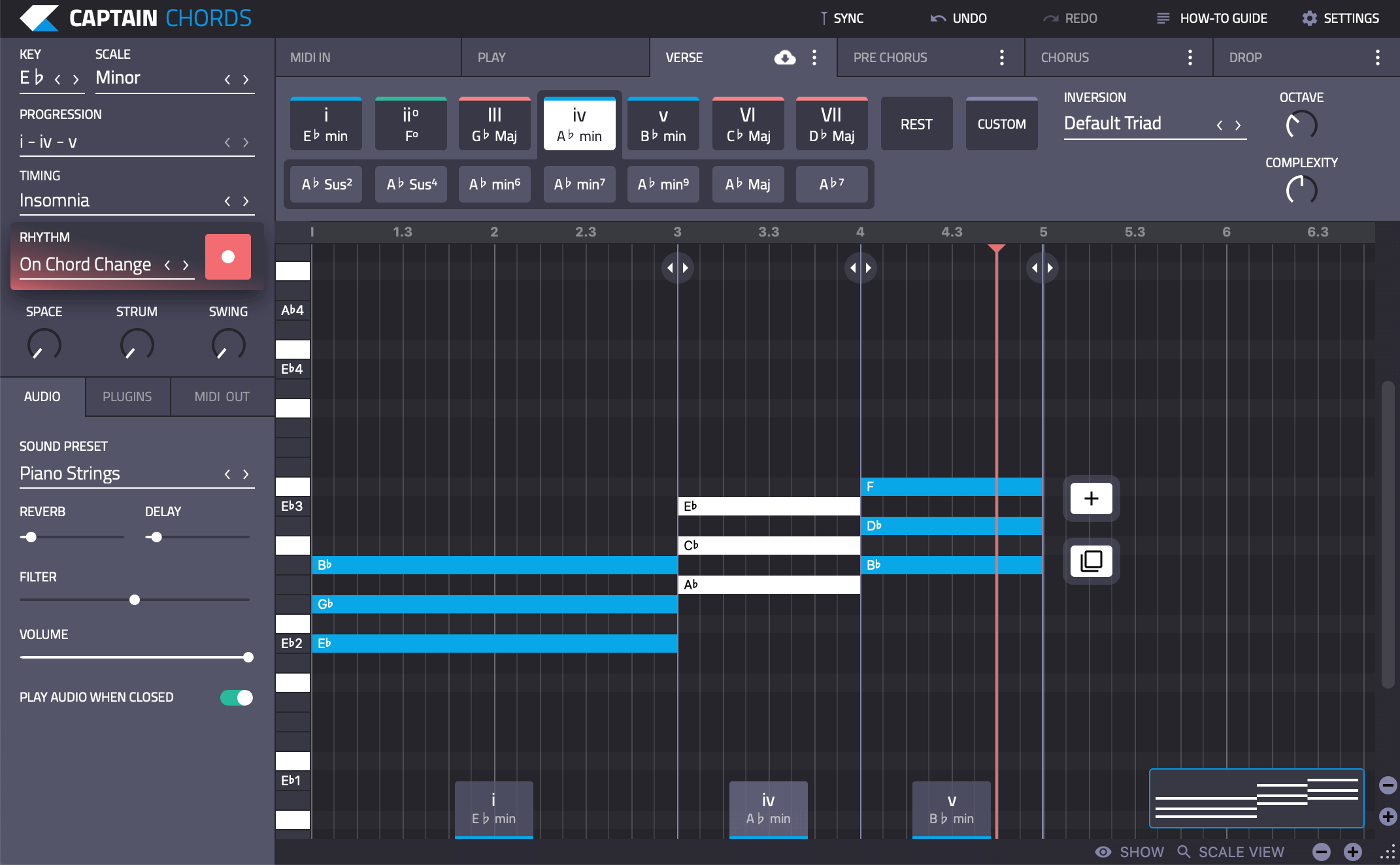
We can use this info to generate a second version of our chord structure. We’ll duplicate the pattern, and then change the first chord to one that includes the Cb of the bassline, in this instance, the Vi. Next, we can invert the chord that follows – in essence, change the order of its notes – so that the Eb of the bass matches the root note of the chord (Fig. H).
a Fig. H – Adding some variation to the chord progression.
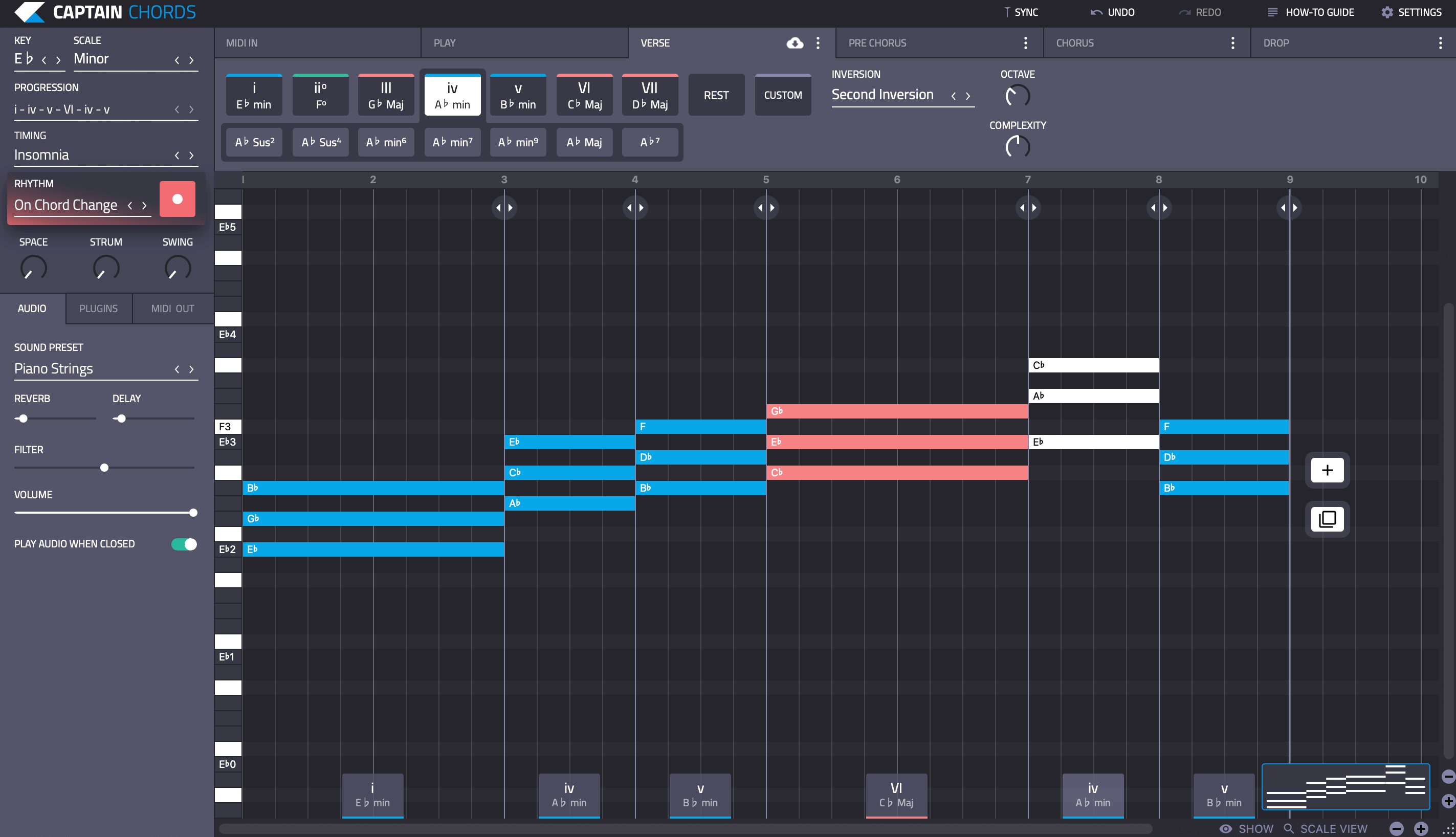
Embracing repetition: Adding a second melody line.
Lastly, we can add a second melody line at a higher octave, emphasising a different rhythm than the bass. Create another midi track and load up a fresh instance of Captain Melody. This time, we will not only adjust the shape parameters, but also utilise the ‘Rhythm’ tab. Here, slightly increase both the number of triplets and the number of rests, whilst slightly reducing the overall density of notes (Fig. I). Again, minor value changes are your friend, allowing you to create small but meaningful changes that stay in keeping with the existing vibe of your track.
To make our new melody stand out even further against the bass, we can use the ‘first note’ tab to move the first note from the root to the fifth. Once we are happy with this new melodies basic shape, we can utilise the same trick found in ‘Can’t get you out of my head’. Remove most of the notes that fall on the first beat of the bar, and add in a few new notes to emphasis the second beat instead. Lastly, duplicate the whole melody, and this time alternate between emphasising the first and second beat.
Fig. I – Using the Rhythm parameter to generate new ideas.
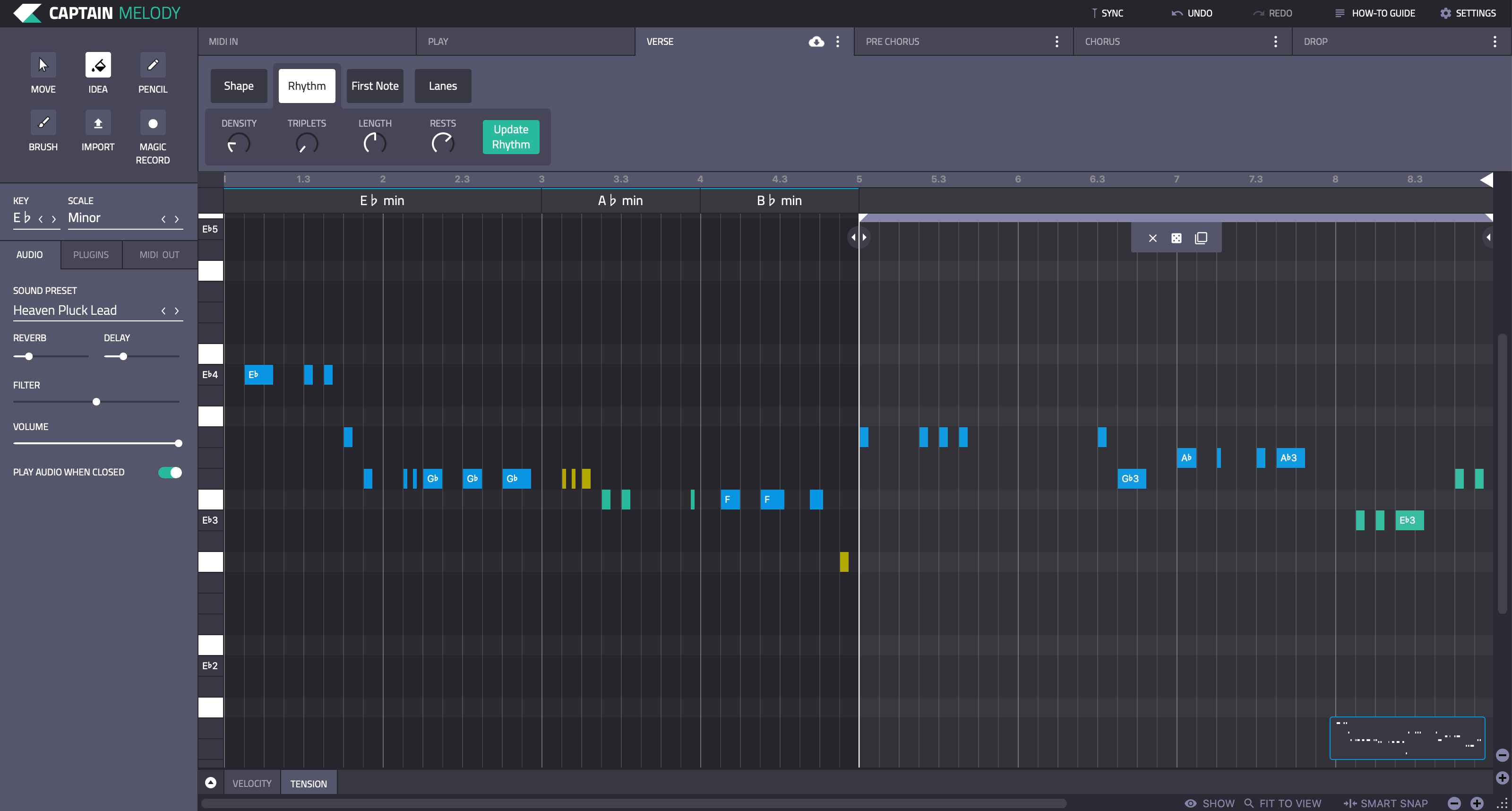
As you can see, we have now created a wealth of possibilities from a simple 2-note bass. With two variations of each part, we can now proceed to overlay different combinations of bass, lead, and chords, without ever changing the fundamental integrity of the song. From the listener’s perspective, our track will sound like it is always changing. Yet in reality, it never deviates from its fundamental rhythmic and tonal structure.
The art of embracing repetition.
Popular music is littered with examples of artists who utilise these techniques to create hit songs, and do so across a broad range of genres. Whilst it is a technique we often consider synonymous with contemporary electronic music, you’ll find creative uses of repetition in rock, soul, funk, hip-hop, punk, and more. Check out the list below for some more great examples. Then get busy using Captain Plugins to make some of your own!
- Kylie Minogue – Can’t Get You Out Of My Head
- David Bowie – Under pressure
- Kanye West – Lost in The World
- Eminem – lose yourself
- Bill Withers – Ain’t No Sunshine
- Taylor Swift – Shake It Off
- The Verve – Bittersweet Symphony
- The Streets – Turn The Page
About the author:

